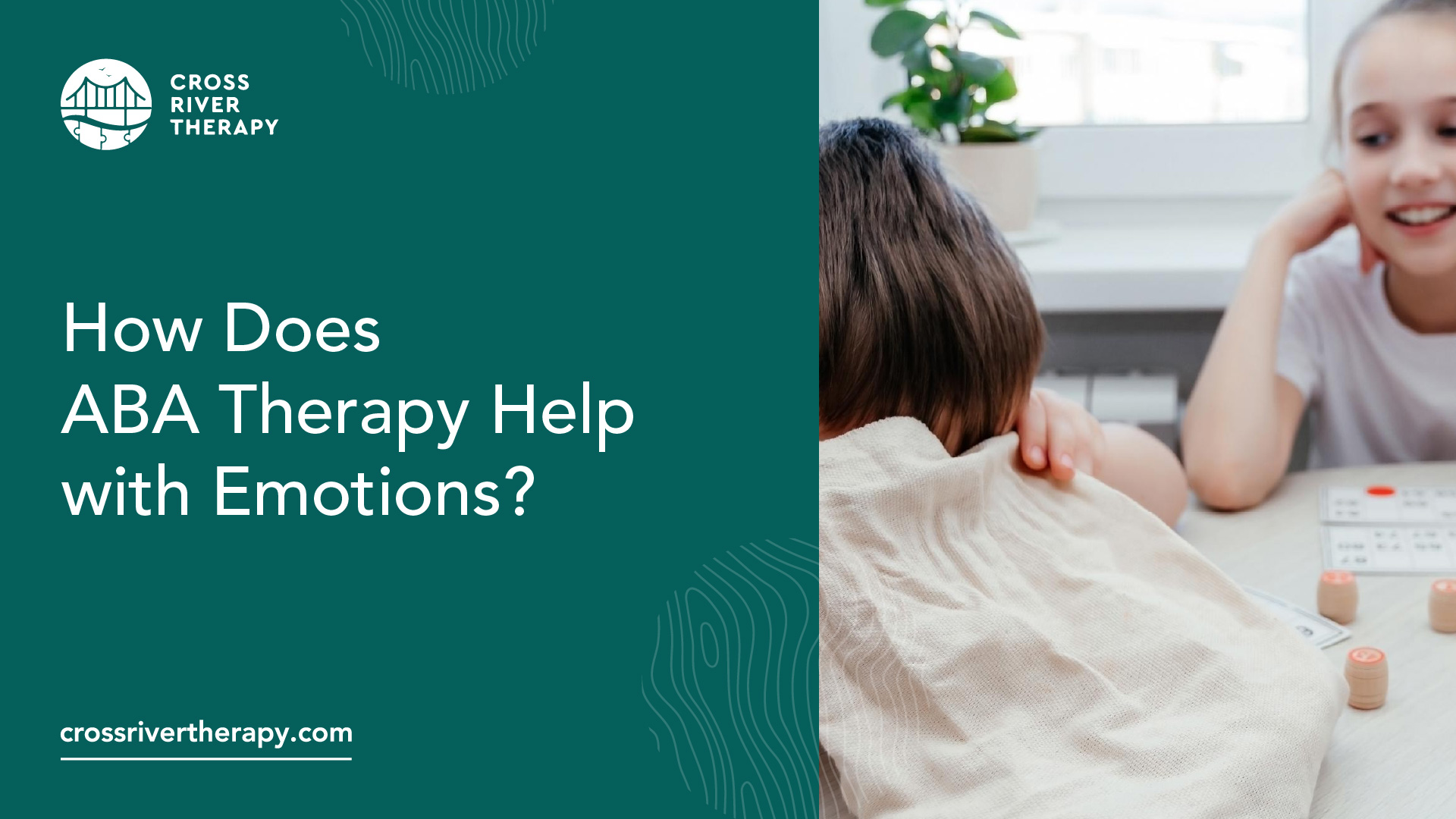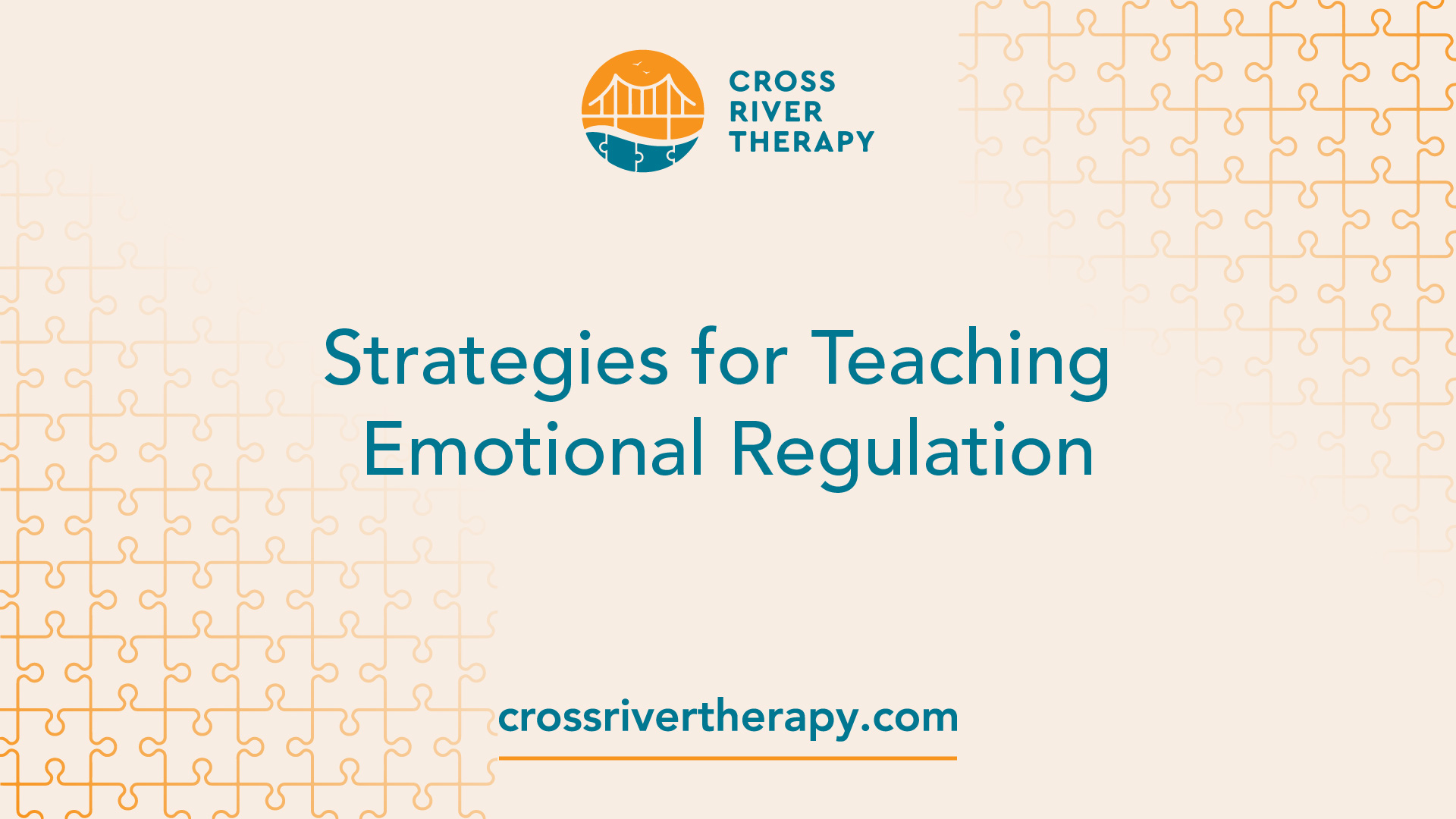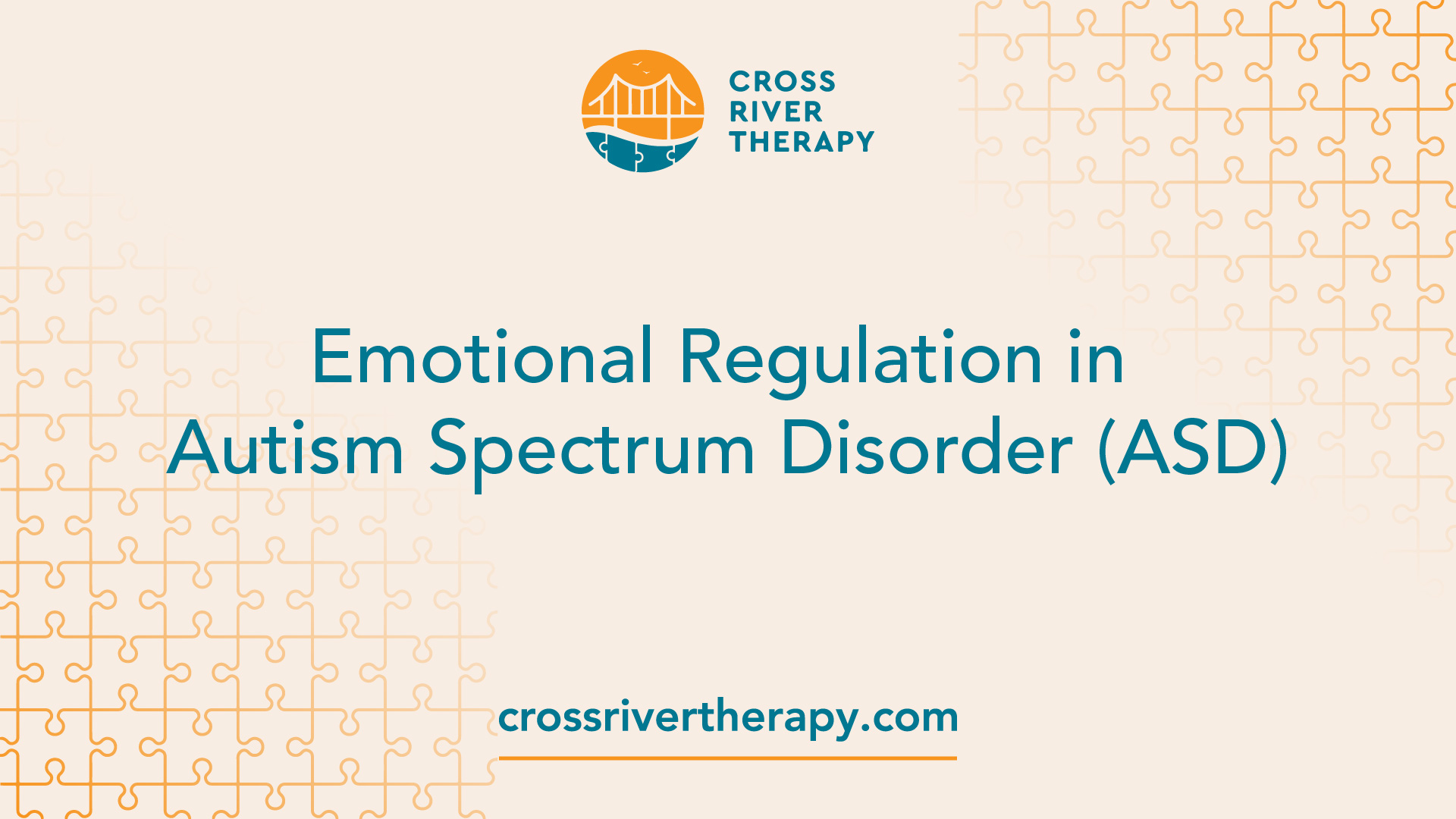How Does ABA Therapy Help with Emotions?
Discover how it empowers individuals with autism to navigate their emotions.

Understanding Emotional Regulation
Emotional regulation refers to the ability to manage and control one's emotions effectively. It plays a vital role in various aspects of life, including relationships, overall well-being, and social interactions. For individuals diagnosed with autism spectrum disorder (ASD), emotional regulation can be particularly challenging.
Importance of Emotional Regulation
Emotional regulation is crucial for developing relationships, maintaining general health, and handling social situations. It involves recognizing and understanding emotions, as well as responding to them in appropriate ways. When individuals have difficulty regulating their emotions, it can lead to mood swings, outbursts, and difficulty responding appropriately to emotional stimuli.
For children with ASD, emotional regulation is especially important as it can impact their daily functioning and overall quality of life. Mastering emotional regulation skills can lead to improved well-being, enhanced social interactions, and a greater sense of emotional stability and self-confidence.
Challenges in Emotional Regulation
Children with ASD often face unique challenges when it comes to emotional regulation. Some common difficulties include:
- Difficulty Identifying and Labeling Emotions: Individuals with ASD may struggle to identify and label their emotions accurately. This can make it challenging for them to communicate their feelings effectively.
- Sensitivity to Emotional Triggers: Children with ASD may be more sensitive to emotional stimuli, experiencing heightened emotional responses to certain situations or sensory inputs. This can lead to difficulties in managing their emotions appropriately.
- Impulsivity and Emotional Outbursts: Some individuals with ASD may have difficulty controlling their emotional impulses, resulting in frequent emotional outbursts or meltdowns.
To address these challenges and help individuals with ASD develop effective emotional regulation skills, Applied Behavior Analysis (ABA) therapy is often utilized. ABA therapy utilizes evidence-based strategies and techniques to teach coping mechanisms and emotional regulation skills.
In the next section, we will explore the role of ABA therapy in addressing emotional dysregulation in individuals with ASD and the techniques used in ABA therapy for emotional regulation.
Strategies for Teaching Emotional Regulation

When it comes to teaching emotional regulation, a behavior-analytic approach has proven to be effective in helping individuals, especially children diagnosed with autism, develop skills to manage their emotions. This section explores three strategies commonly used in Applied Behavior Analysis (ABA) therapy for teaching emotional regulation: the behavior-analytic approach, visual tools, and providing feedback and reinforcement.
Behavior-Analytic Approach
The behavior-analytic approach recognizes the importance of teaching coping strategies and emotional regulation techniques, despite behavior analysts primarily focusing on observable and measurable behavior [3]. This approach involves using various methods to teach emotional regulation skills, such as:
- Visuals and modeling: Visual aids, such as stoplights representing different emotional states and corresponding strategies, or flip books with emotions and calming activities, can be effective tools for teaching emotional regulation [3]. Modeling appropriate emotional regulation behaviors and labeling emotions can also help individuals learn and understand how to manage their own emotions.
- Role-playing: Role-playing emotional regulating behaviors allows individuals to practice and apply strategies in a controlled setting. This helps them develop the skills needed to manage emotions effectively in real-life situations.
- Feedback and generalization: Providing feedback to individuals on their use of calming strategies and reinforcing behaviors like "using calming strategies" or "letting others know how you feel" is crucial in teaching emotional regulation. Generalizing these skills to different environments and situations is also essential for individuals to apply their emotional regulation techniques effectively.
Visual Tools for Emotional Regulation
Visual tools play a significant role in teaching emotional regulation to individuals. These tools provide a visual representation of emotions and corresponding strategies, making it easier for individuals to understand and remember how to regulate their emotions. Some commonly used visual tools include:
- Emotion stoplights: Using a stoplight with colors representing different emotional states and corresponding strategies can help individuals identify their emotions and choose appropriate strategies to regulate them.
- Emotion flip books: Flip books with different emotions and calming activities can be a helpful resource for individuals to refer to when they need assistance in recognizing and managing their emotions.
Providing Feedback and Reinforcement
Feedback and reinforcement are essential components of teaching emotional regulation. Providing specific and constructive feedback on an individual's use of calming strategies helps them understand how to improve their emotional regulation skills. Reinforcing behaviors such as "using calming strategies" or "letting others know how you feel" encourages individuals to continue practicing and applying their emotional regulation techniques.
Data collection is also a vital aspect of teaching emotional regulation. By taking data on various aspects, such as the effectiveness of strategies and the individual's progress in managing their emotions, behavior analysts can assess the effectiveness of interventions and make adjustments as needed [3].
By employing behavior-analytic strategies, utilizing visual tools, and providing feedback and reinforcement, ABA therapy can effectively teach emotional regulation skills to individuals, including those with autism. These strategies help individuals develop the necessary skills to manage their emotions and navigate social interactions more effectively.
Emotional Regulation in Autism Spectrum Disorder (ASD)

For individuals with autism spectrum disorder (ASD), emotional regulation can be particularly challenging. Emotional dysregulation refers to difficulties in managing and responding to emotions effectively. Understanding the prevalence and impact of emotional dysregulation in ASD is crucial for providing appropriate support and interventions.
Prevalence of Emotional Dysregulation in ASD
According to a 2021 study, autistic children and teens are four times more likely to have difficulty controlling their emotions compared to their neurotypical counterparts. Emotional dysregulation manifests in various ways, including behaviors such as biting, hitting, tantrums, social withdrawal, self-injury, and extreme silliness.
Impact of Emotional Dysregulation in ASD
Emotional regulation plays a crucial role in various aspects of life, including developing relationships, maintaining general health, and handling social situations. However, children with ASD often struggle with regulating their emotions, experiencing mood swings, and finding it challenging to respond appropriately to emotional stimuli [1].
The impact of emotional dysregulation in ASD can be far-reaching. Difficulties in managing emotions can lead to increased stress levels, impaired social interactions, and hindered learning and academic performance. It can also contribute to behavioral challenges and difficulties in adapting to new situations or changes in routines.
To address emotional dysregulation in individuals with ASD, ABA therapy has proven to be effective. ABA therapy utilizes evidence-based strategies to teach critical emotional regulation skills and provide support for individuals with ASD.
By employing techniques such as emotion charts, modeling appropriate behavior, providing feedback and reinforcement for good behavior, encouraging social interaction, and teaching coping mechanisms, ABA therapy helps individuals with ASD learn and develop essential emotional regulation skills. ABA therapy also focuses on teaching strategies to handle sensory overload, such as using headphones in loud environments, wearing sunglasses in bright places, or practicing deep breathing when overwhelmed by sensory stimuli.
In conclusion, emotional dysregulation is prevalent in individuals with ASD and can significantly impact various aspects of their lives. ABA therapy plays a crucial role in addressing emotional dysregulation by providing effective strategies and interventions to teach emotional regulation skills and support individuals with ASD in managing their emotions more effectively.
ABA Therapy for Emotional Regulation in ASD
Role of ABA Therapy in Addressing Emotional Dysregulation
Applied Behavior Analysis (ABA) therapy is a widely recognized and evidence-based approach that plays a crucial role in addressing emotional dysregulation in individuals with Autism Spectrum Disorder (ASD). ABA therapists work closely with individuals with autism to identify triggers, develop coping mechanisms, and practice appropriate emotional responses. By implementing structured and individualized interventions, ABA therapy aims to teach important emotional regulation skills.
One of the key aspects of ABA therapy for emotional regulation is providing feedback and reinforcement. ABA therapists provide feedback to individuals on their use of calming strategies and reinforce behaviors such as "using calming strategies" or "letting others know how you feel." This helps individuals with ASD learn and strengthen their emotional regulation skills.
Techniques Used in ABA Therapy for Emotional Regulation
In ABA therapy, various techniques are utilized to teach emotional regulation skills to individuals with ASD. These techniques help individuals understand and manage their emotions effectively. Some common techniques include:
- Emotion charts: Emotion charts visually represent different emotions and help individuals identify and label their own emotions. These charts can serve as a reference point for individuals to recognize and understand their feelings.
- Modeling appropriate behavior: ABA therapists model appropriate emotional responses and behaviors for individuals with ASD. By observing and imitating these behaviors, individuals learn how to regulate their emotions and respond appropriately in different situations.
- Providing feedback and reinforcement: ABA therapists provide feedback and reinforcement for good behavior related to emotional regulation. This positive reinforcement encourages individuals to engage in desired emotional regulation strategies and helps them learn and generalize these skills to various contexts.
- Encouraging social interaction: ABA therapy focuses on teaching individuals with ASD social skills and promoting social interaction. Engaging in social interactions provides opportunities for individuals to practice emotional regulation in real-life situations and learn from social cues.
- Teaching coping mechanisms: ABA therapists teach individuals with ASD effective coping mechanisms to manage distressing emotions. These coping mechanisms may include deep breathing exercises, self-calming techniques, or using visual supports to aid in emotional regulation.
By utilizing these techniques, ABA therapy supports individuals with ASD in developing important emotional regulation skills. It helps individuals understand their emotions, react appropriately to emotional stimuli, and cope with challenging situations [1]. It is important to note that ABA therapy is highly individualized, and strategies are tailored to meet the specific needs of each individual.
Individuals with autism may face unique challenges when it comes to emotional regulation, such as social interaction and communication challenges, as well as sensory sensitivities that can intensify emotional responses. ABA therapy addresses these challenges by providing targeted interventions and support, helping individuals with ASD build emotional regulation skills and enhance their overall well-being.
Challenges and Strategies in Emotional Regulation for Individuals with ASD
Individuals with Autism Spectrum Disorder (ASD) may face specific challenges when it comes to emotional regulation. These challenges can impact their daily lives and interactions with others. By understanding these challenges, we can develop effective strategies to support individuals with ASD in managing their emotions.
Social Interaction and Communication Challenges
One of the core challenges individuals with ASD may experience is difficulty with social interaction and communication. This can include challenges in understanding and interpreting social cues, recognizing emotions in others, and expressing their own emotions effectively. As a result, they may struggle with developing and maintaining relationships, as well as understanding and expressing empathy Supportive Care ABA.
To address these challenges, individuals with ASD can benefit from targeted interventions that focus on teaching social and emotional skills. Applied Behavior Analysis (ABA) therapy, for instance, provides structured and individualized interventions to help individuals with ASD develop social communication skills and emotional understanding. Through ABA therapy, individuals with ASD can learn to recognize and label emotions, understand social cues, and develop appropriate emotional responses.
Sensory Sensitivities and Emotional Responses
Sensory sensitivities are common among individuals with ASD. Certain sounds, textures, or visual stimuli may trigger overwhelming emotions or anxiety, making it harder for them to regulate their emotional state. These sensitivities can intensify emotional responses and contribute to emotional dysregulation.
In order to support individuals with ASD in managing their sensory sensitivities, it is important to create an environment that is conducive to emotional regulation. This may involve providing a quiet space, using visual supports to help individuals understand and anticipate sensory experiences, and incorporating sensory breaks into their daily routines. By addressing sensory sensitivities, we can help individuals with ASD better regulate their emotions and reduce emotional distress.
By recognizing the social interaction and communication challenges, as well as sensory sensitivities, that individuals with ASD may face, we can implement effective strategies to support their emotional regulation. ABA therapy, in particular, plays a crucial role in addressing these challenges by providing targeted interventions and teaching essential skills. Through these strategies, individuals with ASD can develop the necessary tools to navigate their emotions, enhance their social interactions, and improve their overall emotional well-being.
Effectiveness of ABA-Based Interventions
ABA-based interventions have shown to be highly effective in addressing emotional regulation in individuals with autism spectrum disorder (ASD). These interventions focus on teaching new skills and behaviors while reducing challenging behaviors. Let's explore the positive outcomes of ABA therapy and the importance of data collection in this approach.
Positive Outcomes of ABA Therapy
Multiple studies have demonstrated the positive effects of ABA therapy on various aspects of development in individuals with ASD. In a meta-analysis of 14 randomized control trials involving 555 participants, ABA-based interventions were found to have significant effects on socialization, communication, and expressive language outcomes for children with ASD. Long-term, comprehensive ABA-based interventions were also shown to be beneficial for the lifelong development of children with ASD, resulting in positive effects on intellectual functioning, language development, acquisition of daily living skills, and social functioning.
The remarkable findings from the University of California at Los Angeles (UCLA) Young Autism Project model revealed that 47% of children who received ABA treatment reached normal intellectual and educational functioning compared to only 2% of a control group. Additionally, a scoping review identified that ABA interventions were considered a "best practice" and endorsed by the governments of Canada and the United States for the treatment of children and youth with ASD [5]. These findings highlight the significant positive impact that ABA therapy can have on individuals with ASD.
Importance of Data Collection in ABA Therapy
Data collection plays a crucial role in ABA therapy. It allows therapists to objectively measure progress, track the effectiveness of interventions, and make data-driven decisions. By collecting data, therapists can identify patterns, evaluate the impact of specific strategies, and adjust the treatment plan accordingly.
Collecting data involves systematically recording and analyzing information related to the individual's behavior, skill acquisition, and progress towards treatment goals. This data is typically collected in real-time during therapy sessions and can include various measures such as frequency, duration, intensity, and latency of behaviors. The data collected helps therapists track progress, identify areas of improvement, and modify intervention strategies as needed.
The importance of data collection in ABA therapy extends beyond the therapy setting. It enables therapists to collaborate with other professionals, such as educators and caregivers, to ensure consistent implementation of strategies and maximize the individual's progress across different environments. Data collection also allows for ongoing evaluation of treatment effectiveness and helps in making informed decisions regarding the individual's therapy plan.
By consistently collecting and analyzing data, ABA therapists can adapt interventions to suit the unique needs of each individual with ASD. This data-driven approach enhances the effectiveness and efficiency of therapy, leading to meaningful outcomes in emotional regulation and overall development.
In conclusion, ABA-based interventions have consistently demonstrated positive outcomes in addressing emotional regulation in individuals with ASD. The effectiveness of ABA therapy is supported by research and has been endorsed as a "best practice." Additionally, data collection plays a vital role in ABA therapy, enabling therapists to track progress, make informed decisions, and optimize treatment strategies. Through ABA therapy and the systematic collection of data, individuals with ASD can develop essential emotional regulation skills to enhance their overall well-being and quality of life.
References
[1]: https://heartlinksaba.com/emotional-regulation-in-aba/
[3]: https://howtoaba.com/emotional-regulation/



